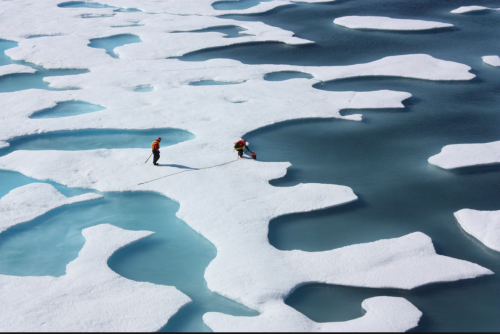Global warming takes its toll on sea turtles
Sea turtles are the latest species affected by the rising temperatures characteristic of global warming. Researchers at the National Oceanic and Atmospheric Administration (NOAA) fisheries have shown that the rising ocean temperatures caused by global warming are resulting in a greater number of newborn female sea turtles than males.
Sea turtles, like many reptiles and fish, undergo temperature-dependent sex determination (TSD). In organisms affected by TSD, the sex of a member of the species is determined by the temperature of the embryo during development. Sea turtles nest on the beach, so in this case, the increasing heat of the sand is directly responsible for an individual’s sex. In general, a higher temperature is correlated with a higher percentage of female individuals in a sea turtle population. This finding is well-established in the field of ecology, but this study marks the first time that the trend has been found in major populations of wild sea turtles.
As both ocean temperatures and terrestrial sand temperatures continue to rise on beaches across the Great Barrier Reef, a greater number of sea turtle populations are giving birth to generations of mostly-female offspring. In fact, the percentage of female adult offspring in some populations has been observed to be as high as 86.8 percent. This imbalance can be bad news for the species, as such high frequencies of females can lead to an overall decrease in male fertility. In general, a population must have a stable ratio of sexes in order to achieve an ecological balance and, if this ratio is not achieved, the species may eventually be driven toward extinction.
Although this news is troubling, especially for the ecosystems in and around the Great Barrier Reef, this study also marks the development of a novel method for studying sea turtles, one that can be generalized to the study of other species. The conventional method of reviewing the sex frequency of sea turtle populations was by anatomical examination of a nest, which is far more impractical and less revealing than the genetics-based method used in this study.
The research team, led by Dr. Michael Jenson, makes use of a combination of both endocrinology and genetic markers on sea turtles they find in the water. These markers can then be traced back to the specific nesting location of the turtle, which can then show the conditions of the nest, including temperature. With this approach, the researchers are not forced to travel across many different nest locations in order to examine the turtles inside.
Although the status of the sea turtle population of the Great Barrier Reef is likely not on most people’s minds, it serves as an omen as to what may come if global warming is not curbed. After all, these turtles are only one of many species affected by the consistent warming of the planet. This relentless force influences other groups as well: polar bears, whose habitat is melting by the day; coral, whose shells are weakening from the acidification of the oceans; maybe even humans, whose sources of food are dwindling as ecosystems around the world begin to decay.
Dr. Mary Beth Decker, professor in the Yale Department of Ecology and Evolutionary Biology, has some sage advice for those who want to help the fight against global warming. “Communicate with your state, federal, and local representatives and encourage them to make good policy decisions with respect to energy and climate. You can also always talk with your friends and family and encourage them to do the same,” Decker said.
References
[1] Current Biology 28, 154–159, January 8, 2018
[2] Interview with Professor Mary Beth Decker, Yale Department of Ecology and Evolutionary Biology, interview on 2/13/2018

